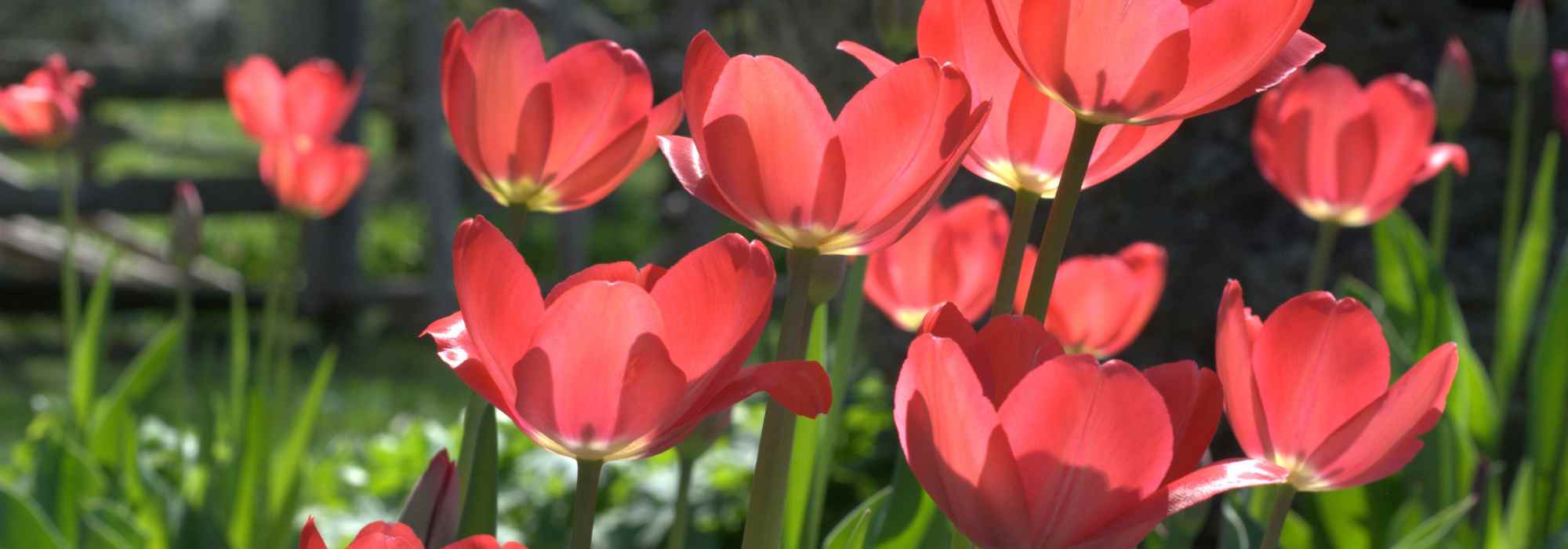
Diseases and Pests of Tulips
Identification, Prevention and Natural Solutions
Contents
The tulips are among those essential spring bulbs for bringing a lovely diversity of colours and a touch of elegance to the garden or containers. Easy to grow and undemanding, they thrive in sunny spots with well-drained soil that doesn’t retain excess water. They can even naturalise and return faithfully each year without the gardener’s intervention.
Tulips can, however, fall victim to parasitic pests or diseases that may affect their flowering. Let’s explore the most common issues, how to prevent risks, and apply natural treatments if needed.
To learn more about growing tulips, check out our guide Tulips: Planting, Growing and Care.
Rodents that attack tulip bulbs
Identification
These are the number one enemies of bulb plants, tulips included. If you notice your tulips failing to emerge from the soil, they may have fallen victim to these small pests’ appetite. Field mice, voles and common mice are particularly fond of flower bulbs. If you live in the countryside, near a forest, wild boars may also feast on tulip bulbs.
Note that moles can also cause some damage in tulip beds by digging tunnels, which may destroy the root system of the bulbs. However, they do not feed on them, as they are insectivorous.
Prevention and Solutions
As a preventive measure, the idea is to make tulip bulbs inaccessible to pests. To do this, you can first grow them in pots. In open ground, surround your tulips with fine-mesh wire netting. You can create individual protections or group several young plants together. There are also commercially available rodent-proof baskets or bulb cages, designed to protect plants from small animals’ appetites.
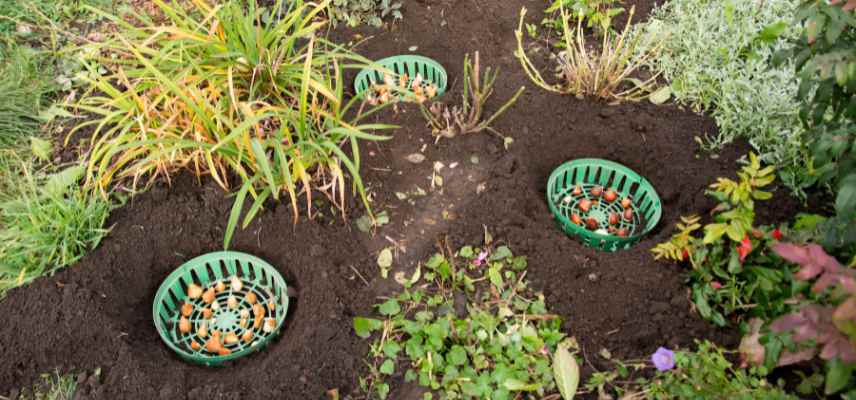
Certain plants are believed to naturally repel rodents, due to their strong scent. This is particularly true for:
- The Fritillaria imperialis;
- The Euphorbia lathyris (which contains irritating latex);
- The Incarvillea.
Plant them among your tulip beds.
You can also surround your tulips with bulbs known to be less appealing to rodents, such as daffodils, amaryllis or snowdrops, which are toxic to small mammal pests.
Finally, some gardeners use sprays of plant infusions (such as garlic or elder), whose scent is said to help deter rodents.
For more information: How to protect bulbs from rodents?
The fire of the tulip
Identification
This is a fungal disease (Botrytis tulipae), caused by a fungus. Tulip fire thrives in excessively moist conditions. It can be identified by grey or brownish spots that appear on the foliage, stems and flowers, which will impact tulip production. The foliage may even become deformed.

Prevention and Solutions
To prevent most fungal diseases, a few simple measures can be implemented.
- Avoid planting tulips in areas previously affected by fungal diseases. Spores can survive in the soil for several years.
- Optimise growing conditions. Plant your tulips in well-drained soil, allowing water to drain freely. In heavy soil, add gravel or clay pebbles at planting time to lighten the substrate. Also ensure your tulips are planted in a sunny spot.
- Space bulbs at least 15 cm apart to promote natural air circulation.
- When watering, avoid wetting or splashing the foliage.
- Apply an organic mulch around your tulips to retain soil moisture and reduce evaporation.
- Some gardeners use plant teas, both preventively and curatively, against fungal diseases. Nettle or horsetail teas, for example, are known to boost plant immunity and may have antifungal properties. You can buy these commercially or make them yourself quite easily. Follow our tutorials for making nettle tea or horsetail tea.
If your bulbs are unfortunately affected by tulip fire, the only solution is to remove the infected plants to prevent further spread. No effective curative treatment currently exists.
For further reading, check out our article All About Fungal Diseases.
Slugs and snails: they cause damage to tulips
Identification
Gastropods are among the most well-known garden pests. Their appetite can lead them to feast on young leaves, even tulip flowers. They can cause significant damage to very young plants, which they may devour entirely.
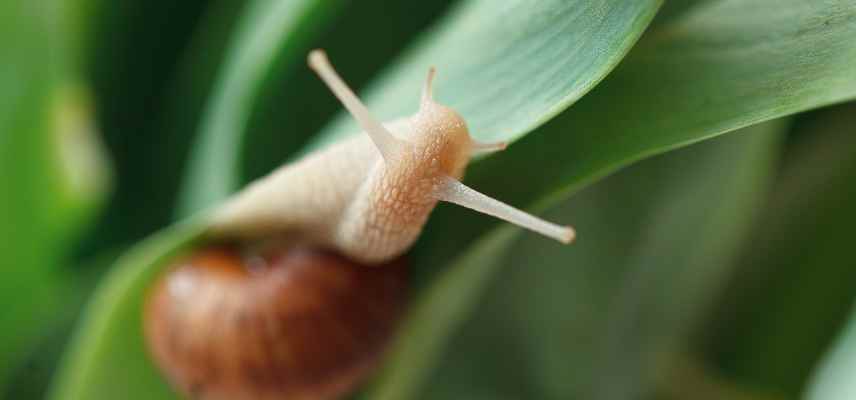
Prevention and Solutions
There are many solutions to combat slugs and snails. Their effectiveness depends on experience and garden conditions.
- Beer traps
- Natural barriers. These can be made from ash, diatomaceous earth, crushed eggshells, or coffee grounds. They are only effective in dry weather and will need to be reapplied regularly.
- Growing repellent plants, such as wormwood or tansy.
- Manual collection early in the morning or at dusk. This is a time-consuming but effective solution. It also allows you to decide what to do with the slimy gluttons (eliminate them or relocate them to an area far from the garden).
- Applying slug pellets. Unlike older, highly toxic products, ferramol-based pellets are approved for organic farming and pose no risk to pets or natural predators of gastropods. They act as appetite suppressants, causing slugs and snails to stop feeding and eventually perish.
At the same time, encourage the presence of natural predators, such as toads, birds, hedgehogs, etc. To do this, avoid using chemical products in your garden, install nesting boxes, shelters, water bowls, and feeders, leave some areas fallow, etc.
Releasing chickens or Indian Runner ducks can also help regulate slug and snail populations. However, be cautious: these poultry can damage crops by scratching the soil with their feet.
For further reading, check out our article Slugs: 7 Effective and Natural Ways to Control Them.
Aphids on tulips
Identification
These are other very common pests in gardens. Aphids are sap-sucking insects that feed on plant sap, which weakens them. Above all, the sticky honeydew they secrete can encourage the appearance of a fungal disease: sooty mould. It is recognisable by the black, soot-like deposits that form on leaves, stems or flowers. By hindering proper photosynthesis, it can cause bulbs to wither. Aphids can also transmit other pathogenous agents to tulips, which will impact their healthy development.
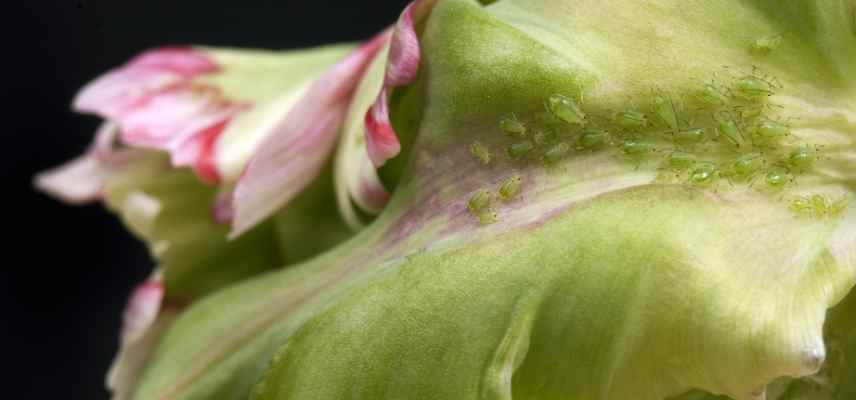
Prevention and Solutions
Regular observation of your tulips will allow you to quickly spot the first signs of aphid presence: small colonies of black dots, curled leaves, ants moving about as they protect the pests in exchange for their honeydew, etc.
If aphids are few in number, you can simply remove them by hand. In case of infestation, use black soap to make a natural insecticidal spray. Dilute one tablespoon in 1 litre of warm water. Shake, then spray onto affected areas in the evening. Repeat if necessary after about ten days. Note: although natural, this insecticidal spray is not selective and may also affect other insects.
As with combating gastropods, also consider encouraging the presence of natural aphid predators by diversifying your crops: ladybirds, lacewings, etc.
Finally, certain plants, like nasturtiums, naturally act as aphid magnets, diverting these small pests from other crops. However, they will only be effective with late-flowering tulips, allowing enough time for them to develop sufficiently to attract the aphids.
For further reading, discover our article Aphids: Identification and Treatment.
- Subscribe!
- Contents
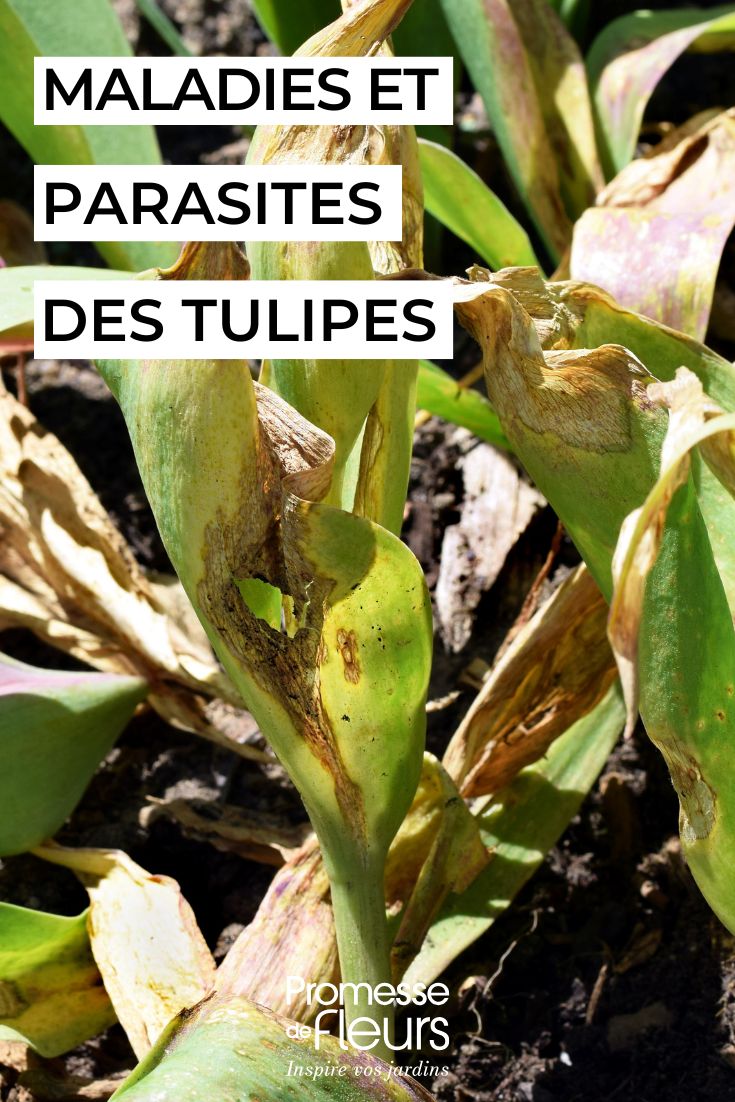































Comments